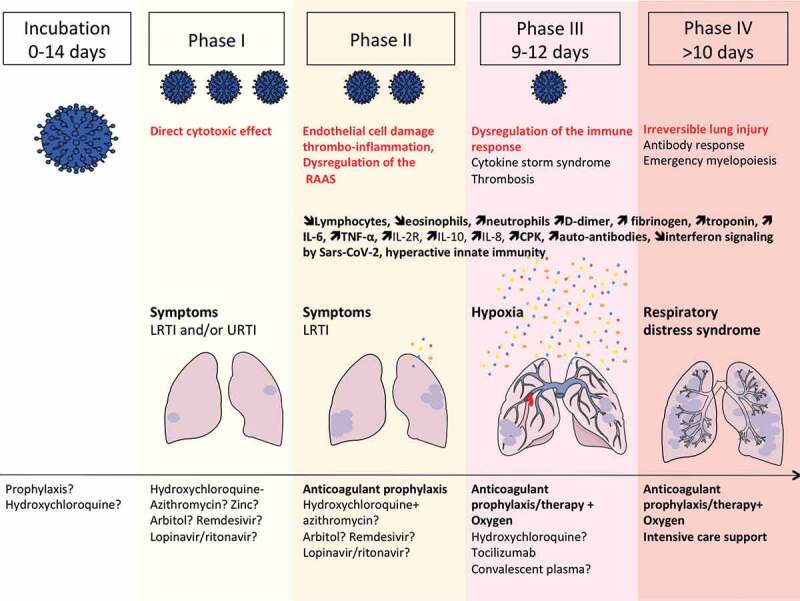Figure 1.

Natural history of COVID-19 infection, from incubation to critical disease.
Incubation phase is reported as variable between 0-14 days,3,5 then first clinical symptoms, upper respiratory tract infection (URTI) (rhinitis, anosmia and agueusia) and/or lower respiratory tract infection (LRTI)(cough, fever, thoracic pain and “happy hypoxia”) are observed. The second phase is characterised by persistent LRTI and leads to medical consultation and/or hospitalization. In the second phase of the disease, abnormal blood parameters involved in the severity of the disease can be observed. Then,from day 9 to 12 after the onset of symptoms (phase III), sudden deterioration caused by the cytokine storm syndrome and pulmonary (macro and micro) embolism can lead to acute respiratory distress syndrome (phase IV) and death. Therapeutic strategies have been proposed for each stage of the disease.6 At the time of incubation, prophylaxis with hydroxychloroquine has showed mitigated results depending on the dosing.7 In the first and second phase of the disease, hydroxychloroquine plus azithromycin and zinc showed promising results6,8,9 Anticoagulant prophylaxis should be used from phase II to IV, since it was shown to reduce both, the cytokine storm and the risk of thrombotic complications.10 Tocilizumab therapy may be useful in the third phase of the disease at the time of cytokine storm syndrome. Oxygen and intensive care therapy are used in the third and fourth phases of the disease.
